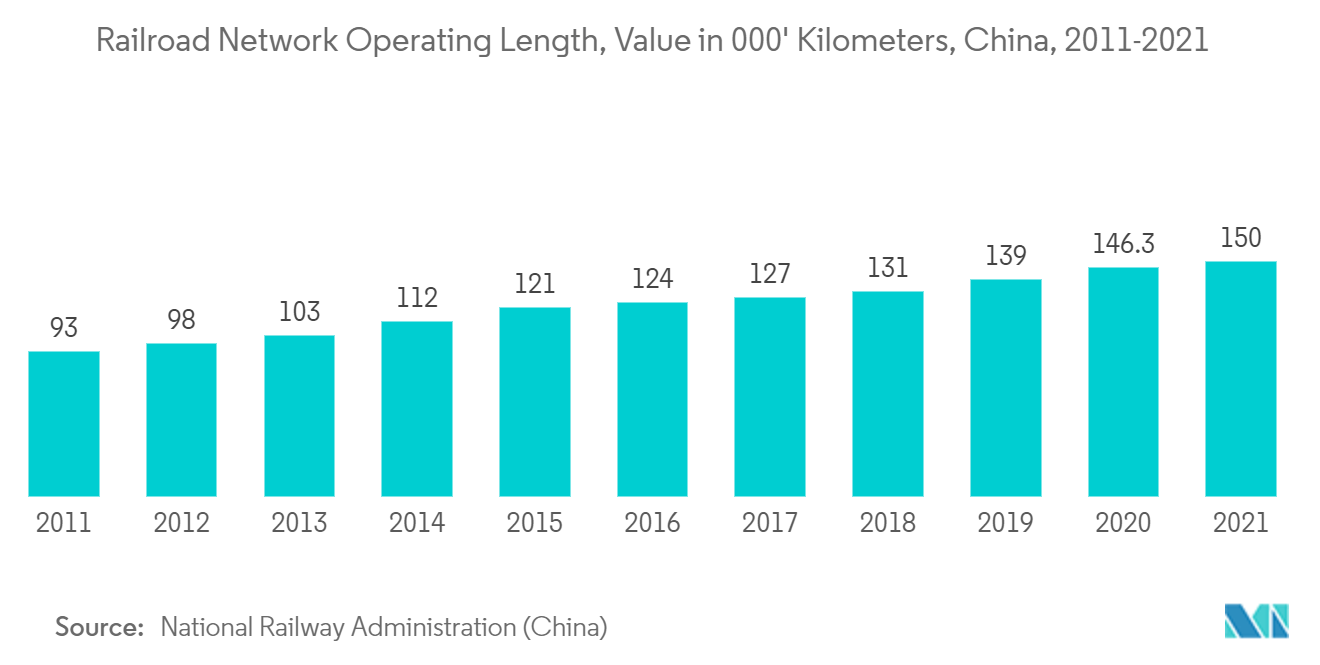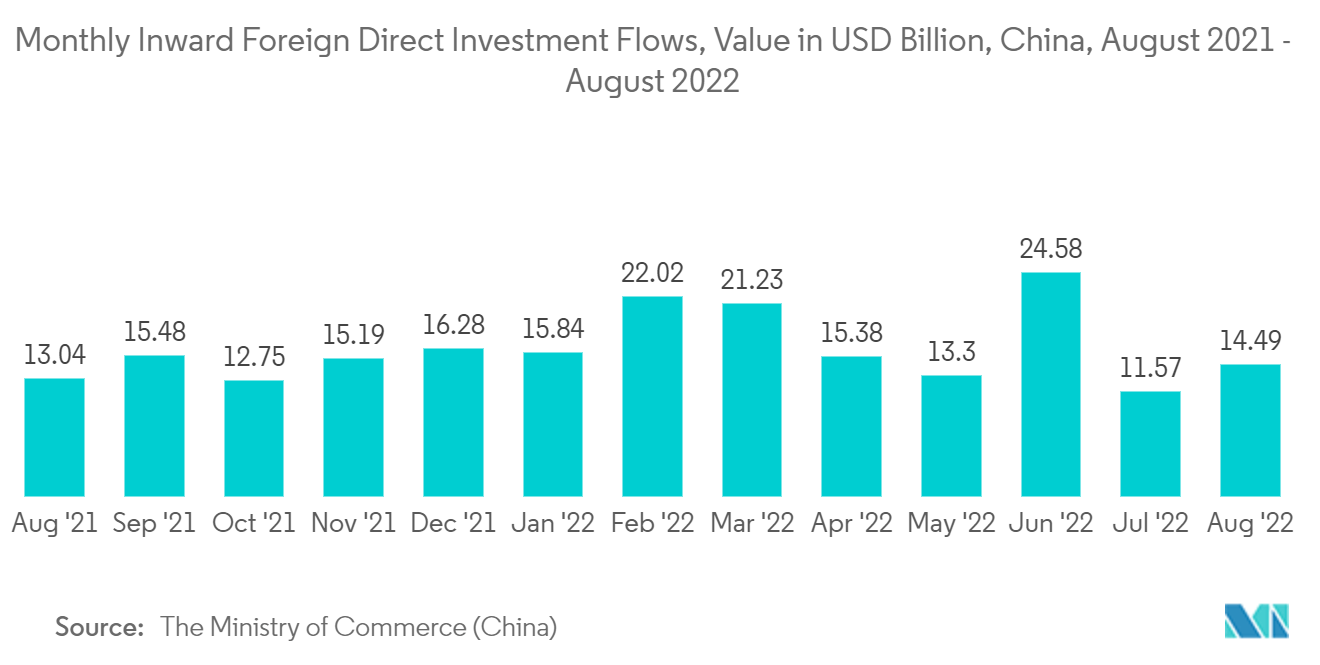Market Trends of Infrastructure Sector in China
This section covers the major market trends shaping the China Infrastructure Sector Market according to our research experts:
Transportation Infrastructure is Witnessing Significant Growth
China's transportation infrastructure is growing at a fast pace. For instance, in 2022, China's State Council released the 14th five-year plan for enhancing its transportation system. The plan aims to build and strengthen roads, railways, ports, and waterways, as well as the technology and human capital involved in the transportation industry. The country is highly focused on transportation infrastructure development. Currently, China has eight vertical (north-south) and eight horizontal (east-west) high-speed railways and has eliminated bottlenecks in regular speed railways.
China faced issues in providing logistics sectors, such as the poor state of warehouses and transportation equipment, urban traffic congestion, and talent shortage in the logistics sector. The 14th five-year plan will address these issues and promote the development of intelligent warehousing and distribution facilities, improving equipment standardization, etc. The plan also enhances the infrastructure of suburban railways, multimodal freight transportation, and specialized transportation services.
In 2021, China planned to set a 15-year plan to develop transportation infrastructure. Under this plan, the country aims to double the world's largest high-speed rail network by 2035. In addition, Beijing aims to increase the national high-speed railway network to 70,000 km (43,500 miles) by 2035, up by more than 84% compared to 2020. The plan also includes the development of a 460,000 km network of national expressways and ordinary highways and a 25,000 km of the high-quality inland waterway system. However, in 2021, China's railroad network operating length reached 150,000 km, up by 2.5% compared to the previous year. Thus, the country's initiatives are driving the transportation infrastructure.

Increasing Investments in Infrastructure Sector
Infrastructure spending has played a vital role in China's economic rise over the past three decades, from laying thousands of miles of railway tracks to building record-breaking skyscrapers. Beijing historically depended on local governments to invest in infrastructure to fuel growth and ensure employment in its jurisdictions. In 2021, investments in fixed assets grew by more than 4.9%, up by 2.9% from the previous year.
Local governments are raising funds for infrastructure projects by issuing special-purpose bonds (SPBs). In 2021, China allocated more than CNY 3.65 trillion (USD 573 billion) in SPBs for local governments, from which more than 95% of the funds were issued by December 2021. In addition, more than 50% of these raised funds were utilized for developing transport infrastructure, municipal administration, and industrial park infrastructure sectors. About 30% was spent on social projects, such as affordable housing, health and sanitation, education, elder care, and culture and tourism. In contrast, the remaining 20% was used to develop agriculture, forestry, irrigation, energy, and rural-urban cold chain logistics.
In 2022, China had planned to spend nearly USD 1 trillion on the construction of infrastructure projects. In addition, North China is focusing on developing renewable energy in desert locations. In 2022, construction began on wind and solar power projects, expected to be completed by 2030. However, in August 2022, according to the Ministry of Commerce, the People's Republic of China, monthly foreign direct investment (FDI) inflows to China amounted to nearly USD 14.5 billion. In addition, in 2021, the total FDIs in the country totaled more than USD 170 billion, up by 20% compared to the previous year. Thus, the growing investments are driving the market's growth.


